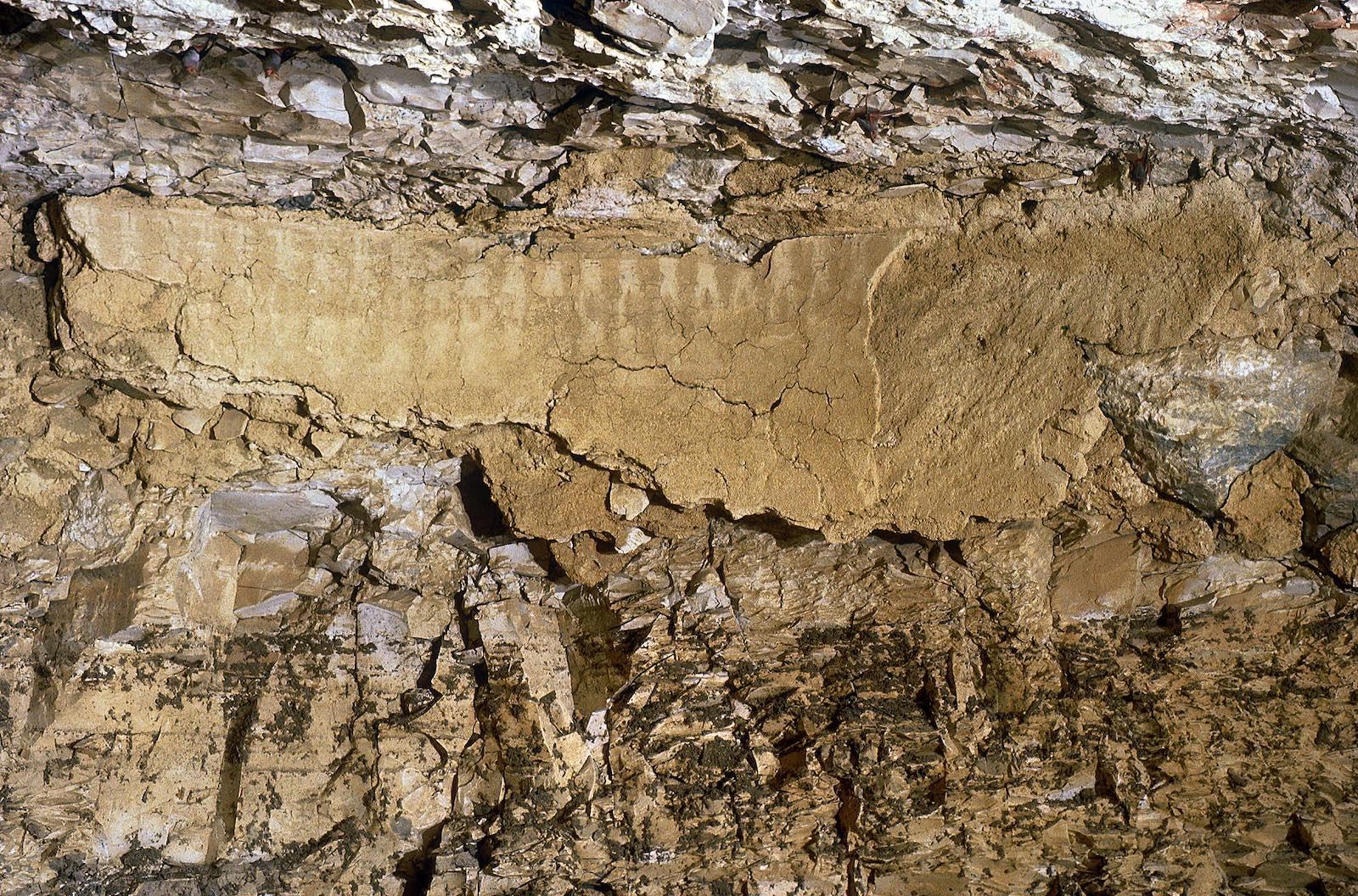The preparation of royal tombs was relatively easier in the New Kingdom than in previous eras when huge pyramids were being constructed. The chambers and corridors of New Kingdom rock-cut tombs were carved into limestone hills and cliffs. Workspace and light sources were limited and working conditions were hot, humid, and dusty, but the quarrying of soft limestone was a fairly simple process. The location of the tomb was important, and finding an appropriate site was a task entrusted only to high officials of the court. [See Selecting a Tomb Site] Once an acceptable site had been decided upon, work crews began to cut into the rock, first creating an irregular working passage, then refining it into corridors and chambers. Because many tombs were never fully completed, we have examples of construction and decoration at several different stages of the process.
An essential part of tomb cutting was the use of an axial line painted on the ceiling, creating a base line from which other measurements were made. This ensured that walls were parallel or at right angles to each other, doorways were properly aligned, and the tomb's axis was straight. Measurements were in cubits (52.3 cm/20.9 inches), subdivided into palms (seven per Cubit, each 7.5 cm/3 inches long) and digits (four per palm, each 1.9 cm/0.76 inches long).
The initial rough cutting was likely done with percussive and cutting tools made of stone, most likely flint or chert, which can be found in abundance in the limestone deposits. Both stones are extremely hard and had been used for hundreds of thousands of years before the New Kingdom in Egypt, from the Stone Age (Palaeolithic) onward. Final finishing of a wall was done with copper and bronze tools.
Careful studies have been made of the chisel marks left on the walls of tombs in order to determine the sizes and shapes of the implements. A wealth of written material in the form of Hieratic dockets, graffiti, inventories, workforce lists, and reports have been found in the Valley of the Kings and Dayr al Madinah, the village of the workmen who were responsible for the construction and decoration of the royal tombs. We know that the workforce was divided into two crews each with its own overseer, the "Gang of the Left" and the "Gang of the Right," referring to the side of the tomb to which they were assigned. In addition to the quarrymen who did the basic hewing of the tomb, other workmen performed such tasks as smoothing the walls and ceilings and applying the gypsum plaster that covered the walls and ceilings.

